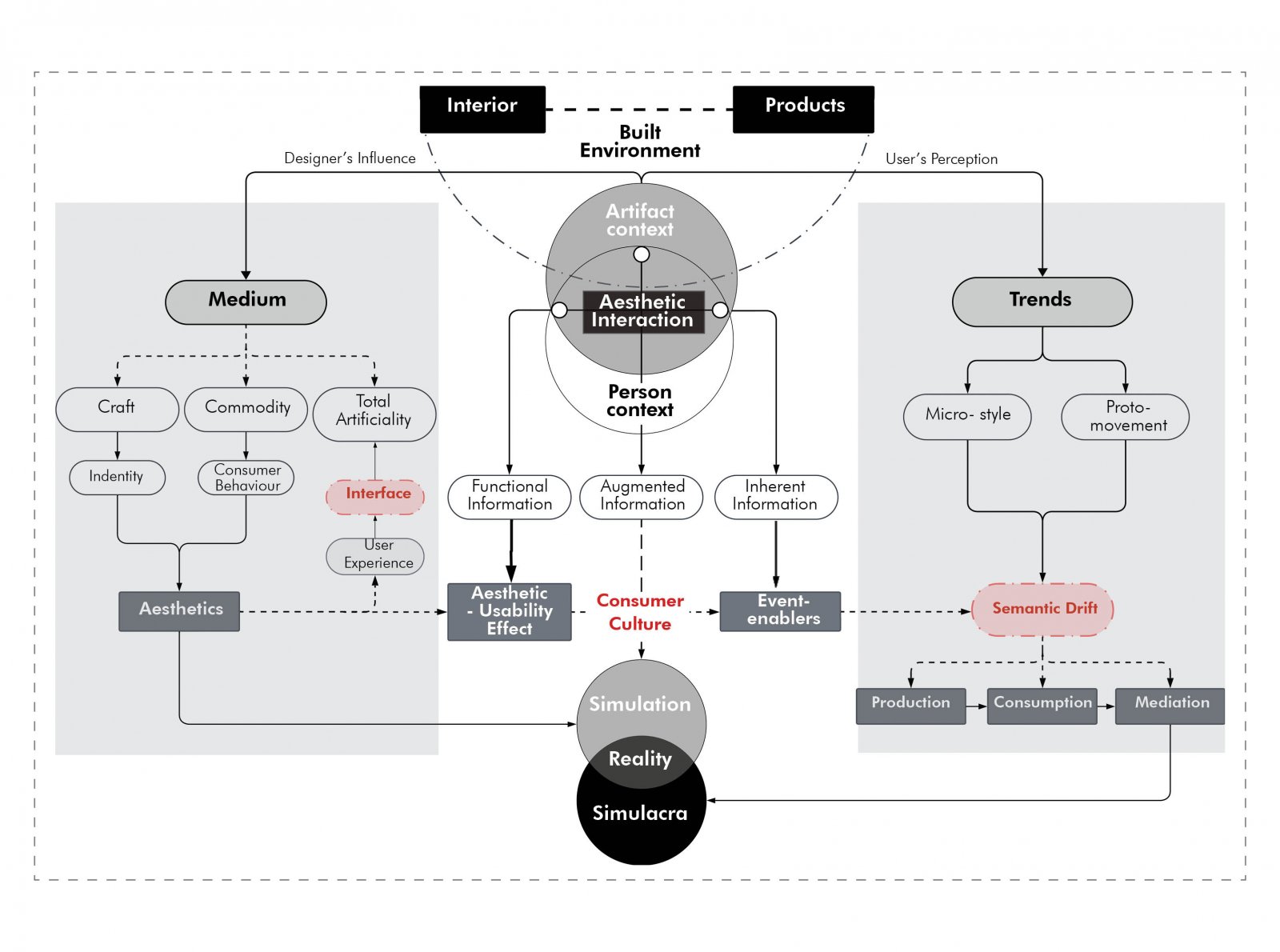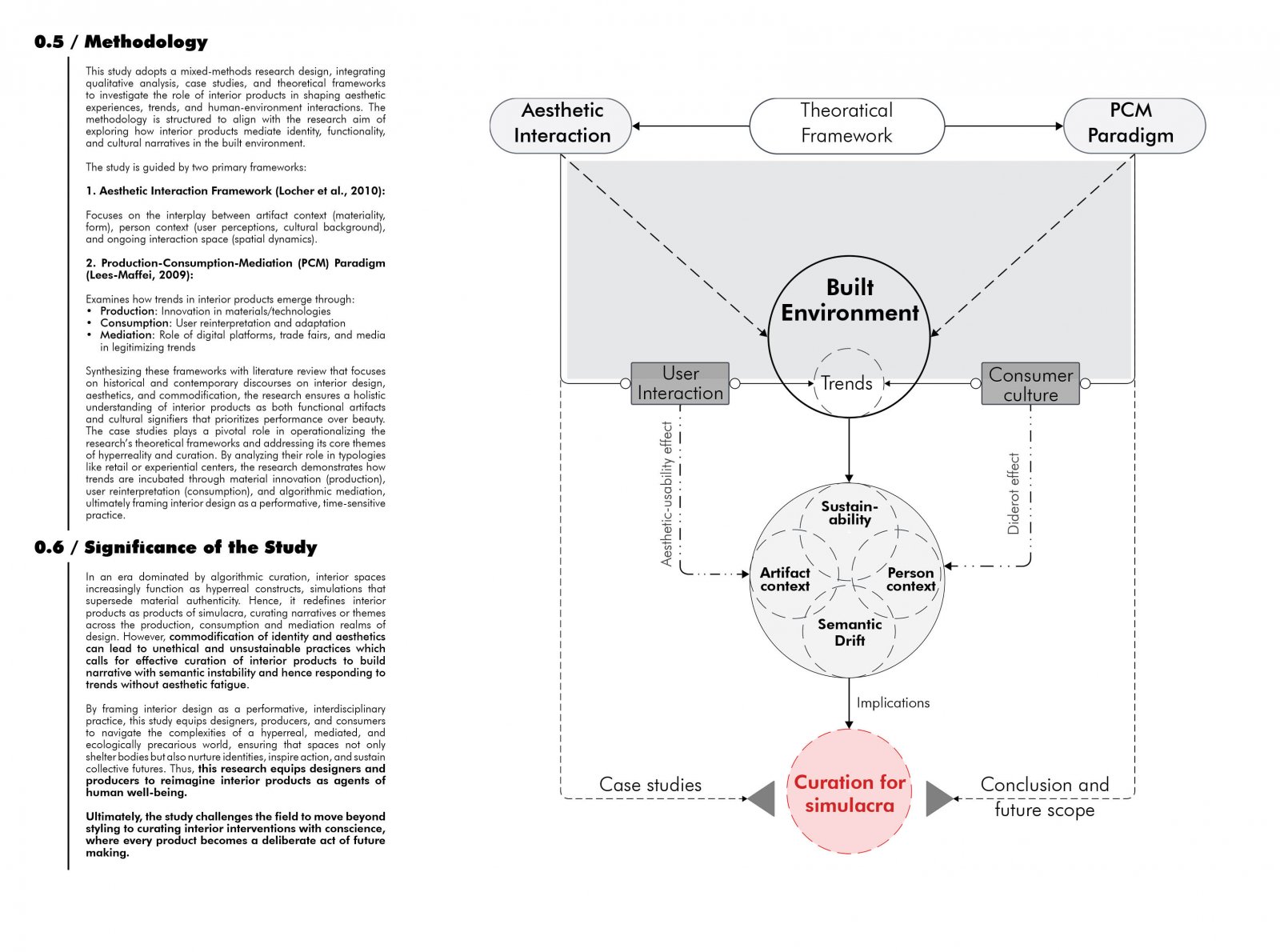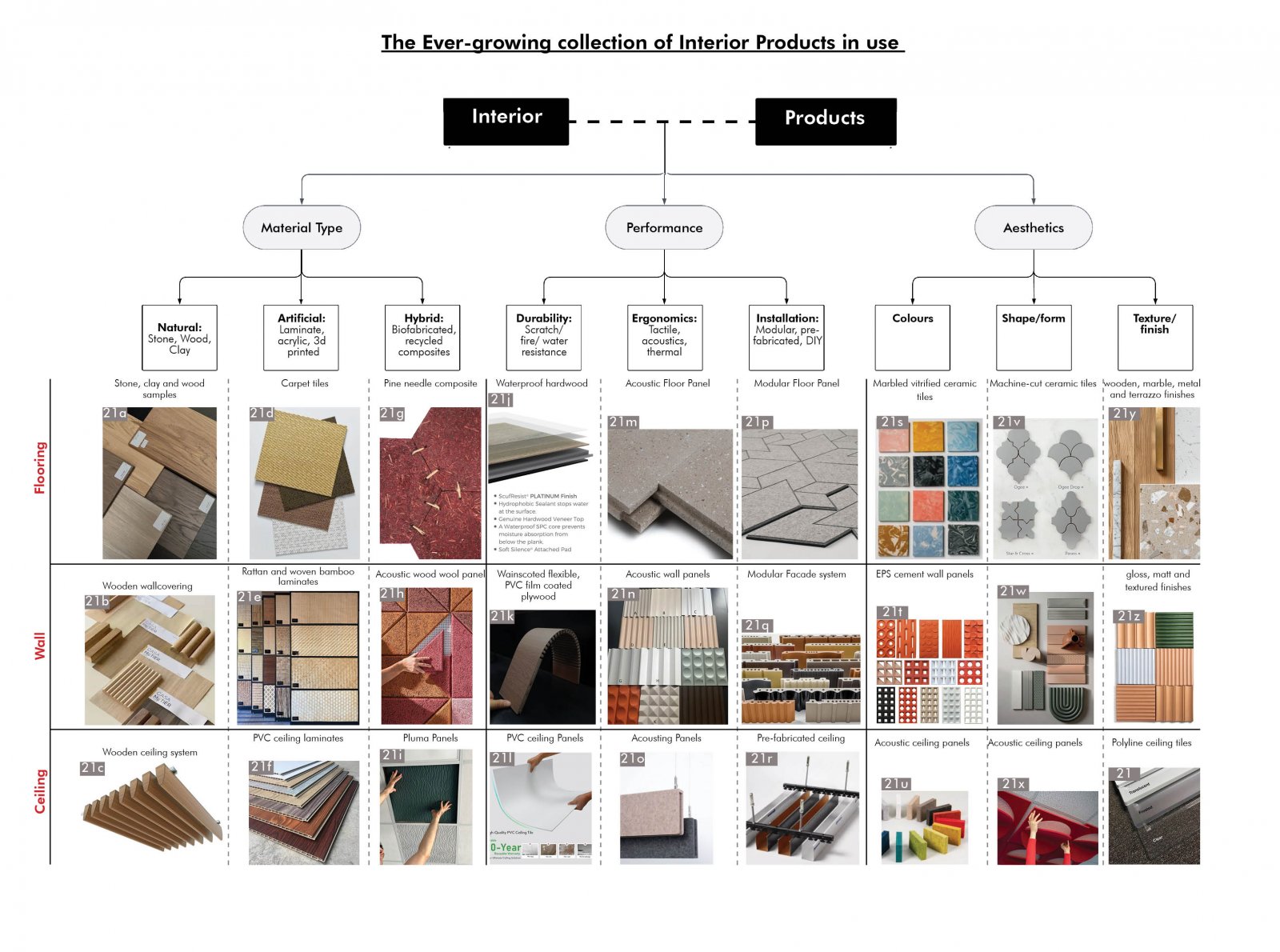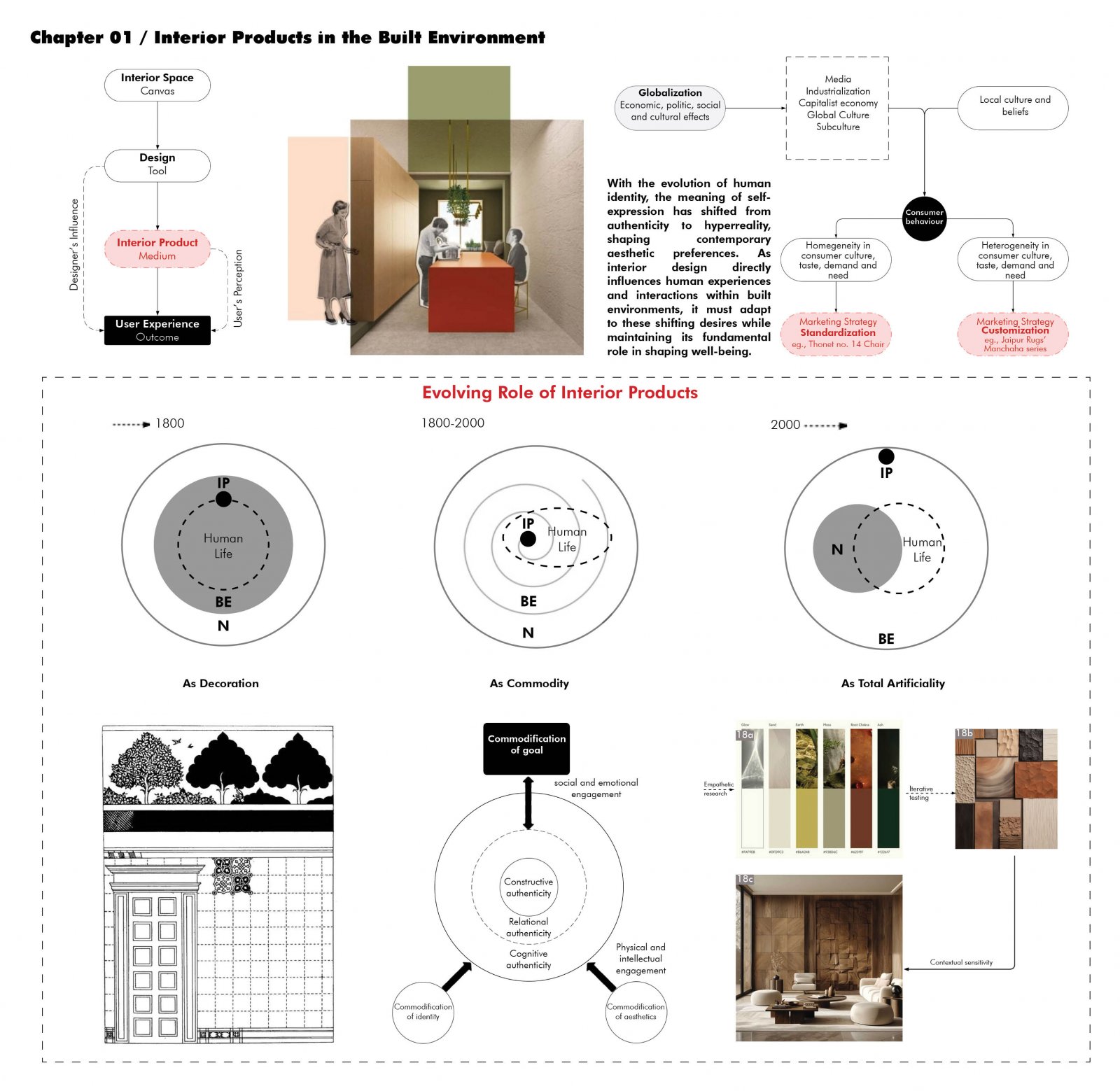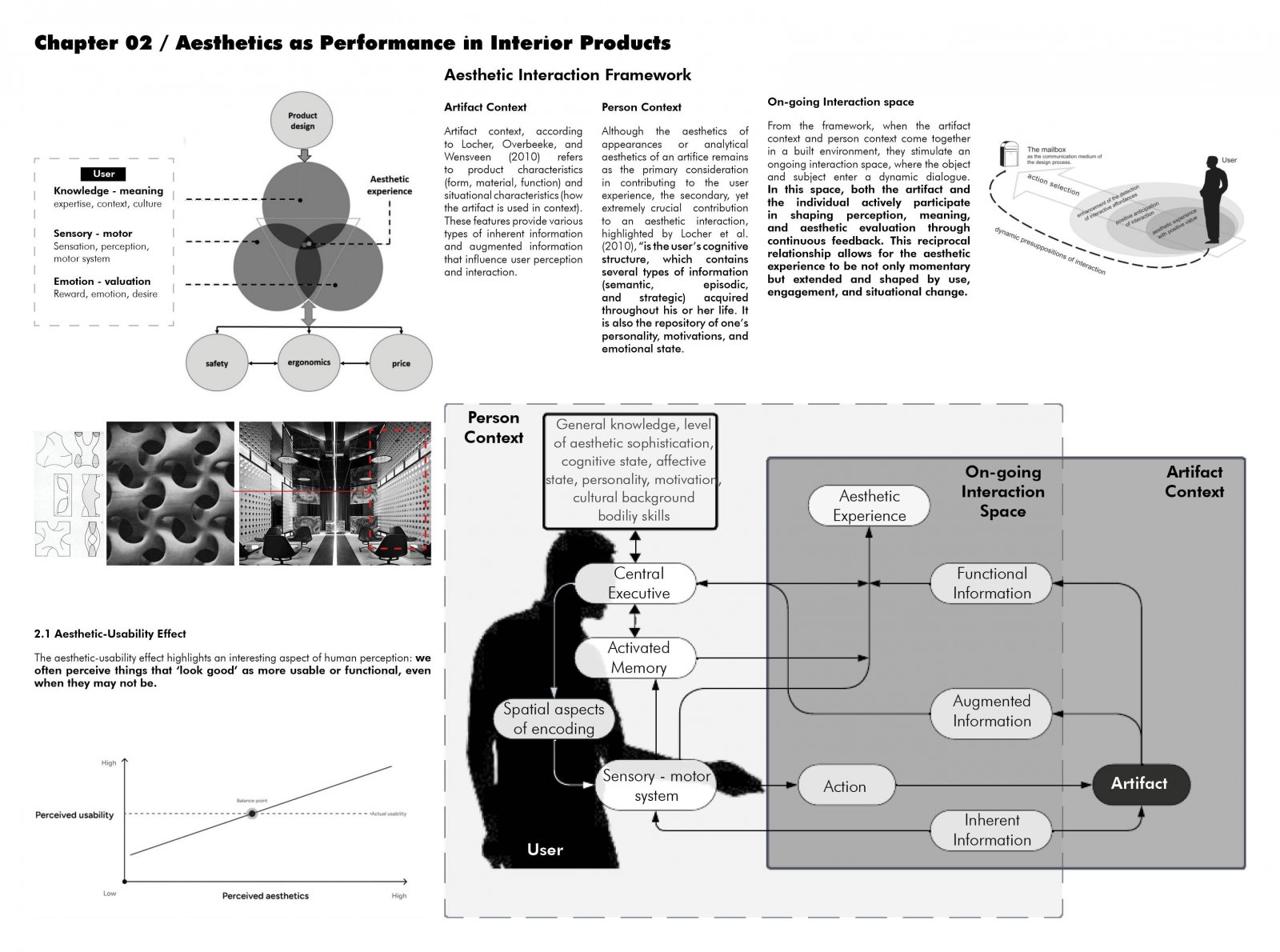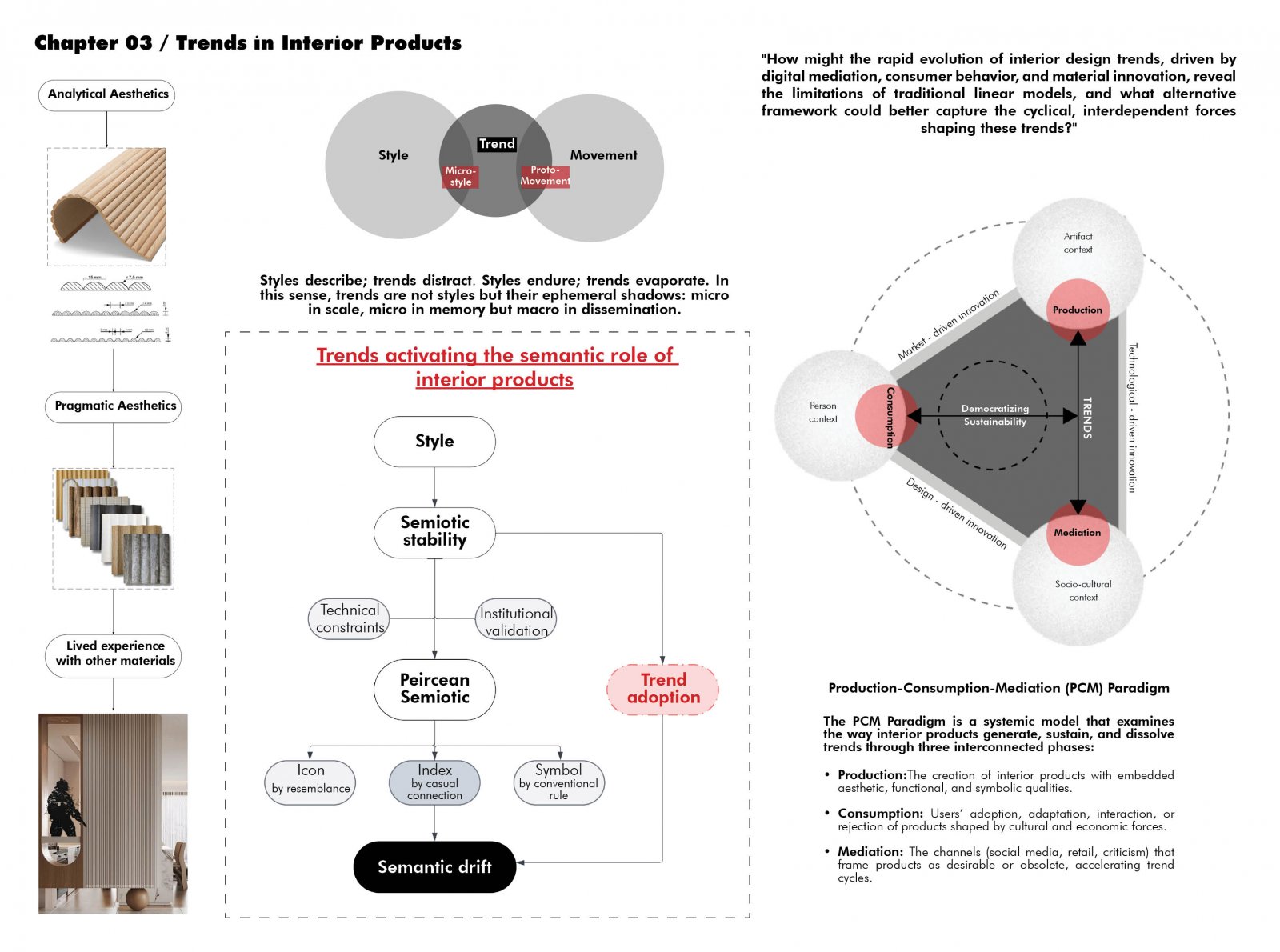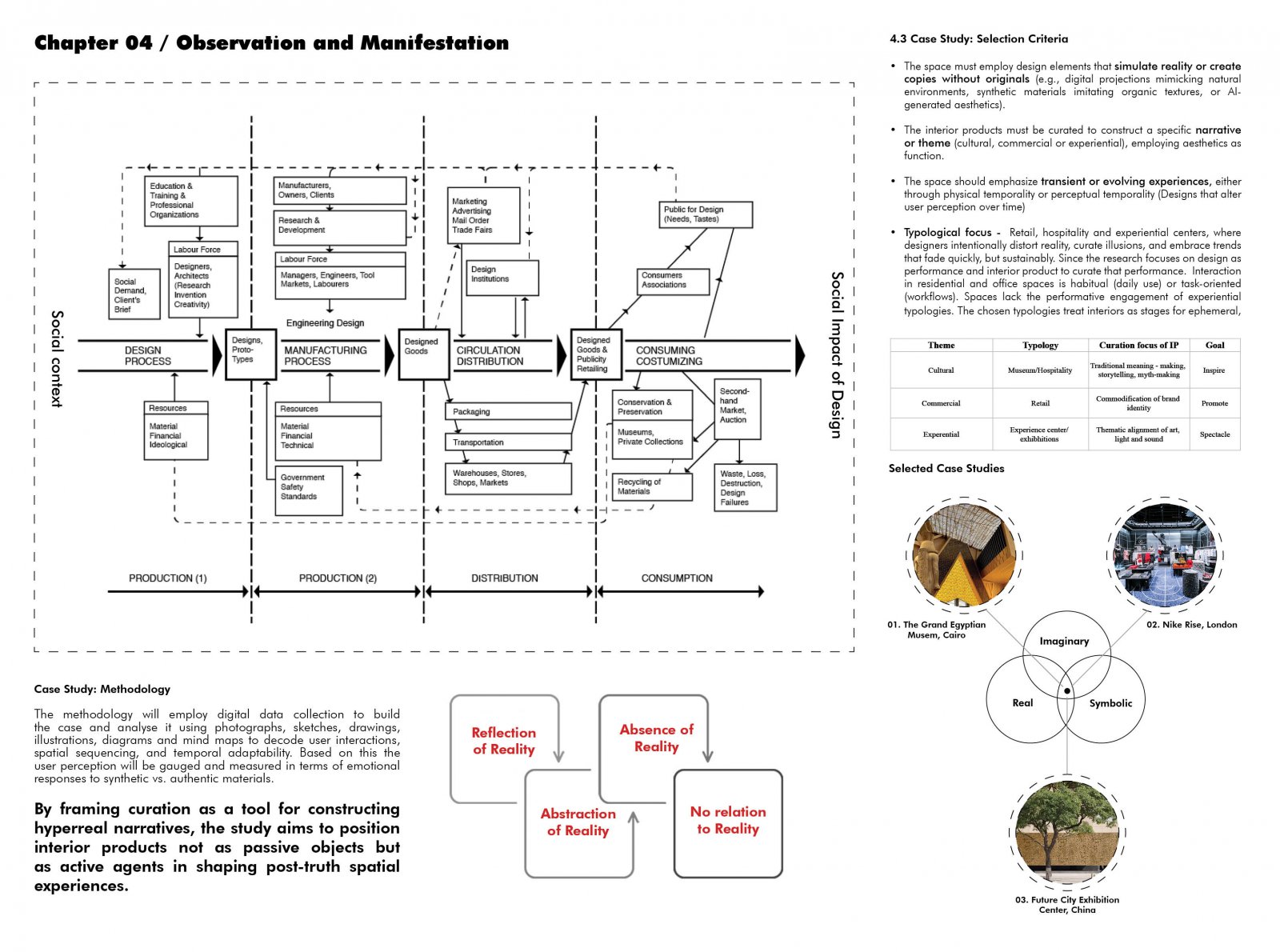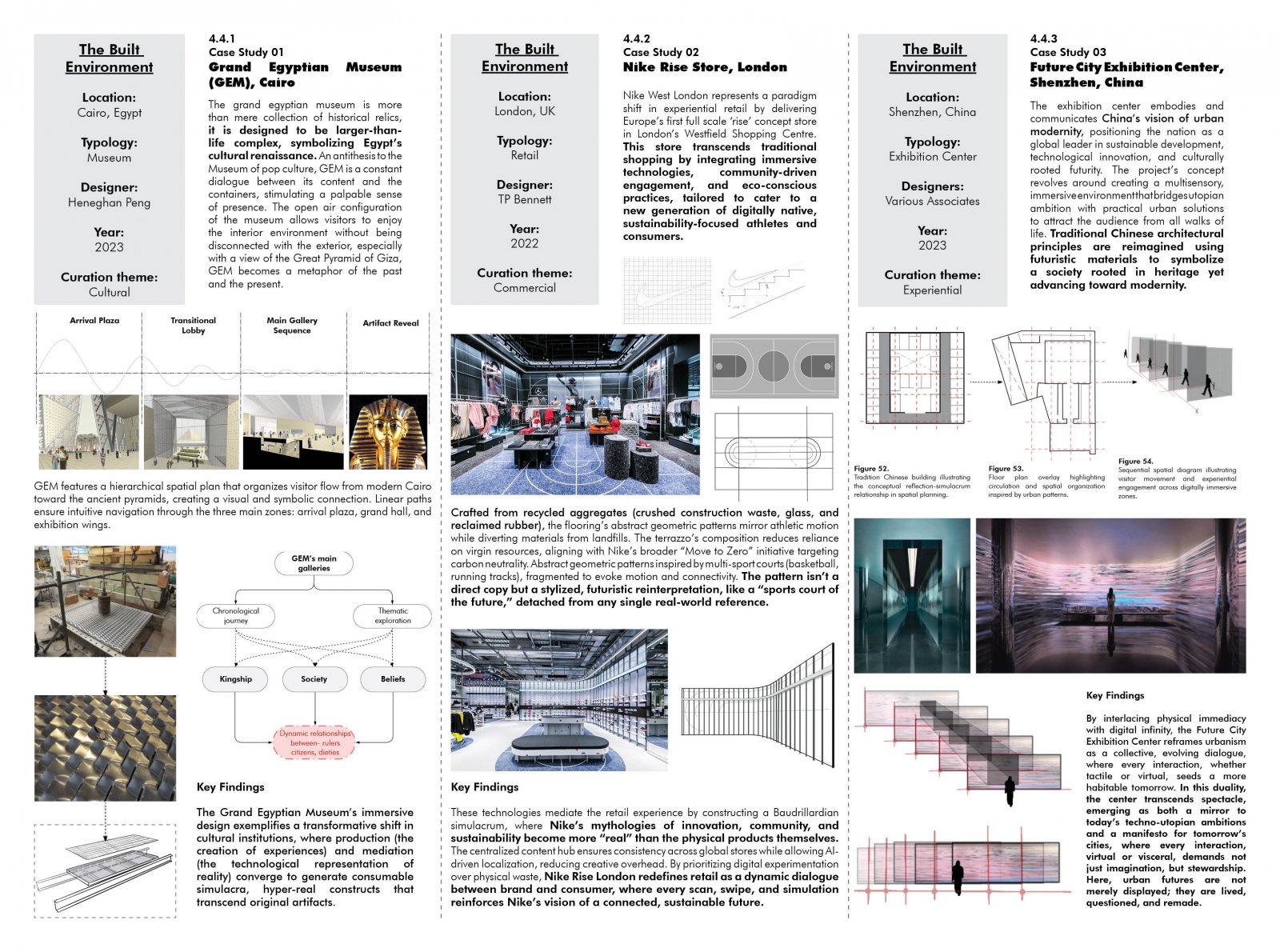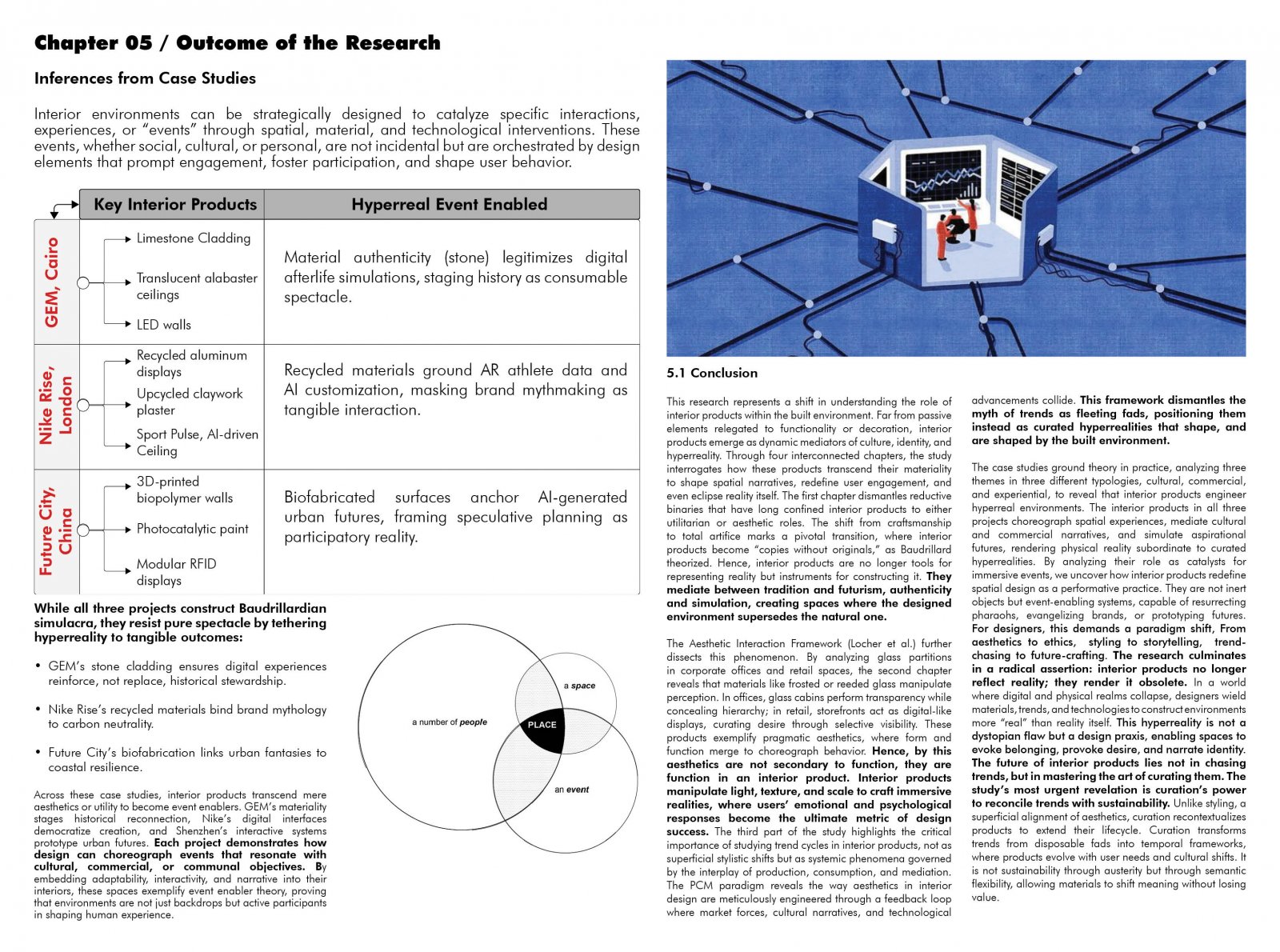Your browser is out-of-date!
For a richer surfing experience on our website, please update your browser. Update my browser now!
For a richer surfing experience on our website, please update your browser. Update my browser now!
Interior products have long been perceived through reductive binaries: as either decorative elements that enhance visual appeal or functional commodities that address pragmatic needs like acoustics, thermal regulation, or spatial division and basic interior cladding needs. This dichotomy often oversimplifies their role, reducing them to technical specifications in the execution stages of design. Moreover the commodification of aesthetics built a commercial narrative that prioritizes its look, generating economic copies, rather than engaging with their performance as an interface between the built environment and the users. This study seeks to bridge this gap in defining the role of interior products in contemporary interior design by addressing questions, such as, how do the material, formal, and sensory properties of interior products shape user perception, behavior, and emotional engagement in built spaces? How to benefit from the ephemeral nature of interior products and examine its emergence, adoption and obsolescence for its production, consumption and mediation processes. Hence, opening a deeper design discourse that analyzes the role of interior products beyond its formal aesthetics or market-driven fads.
View Additional Work
